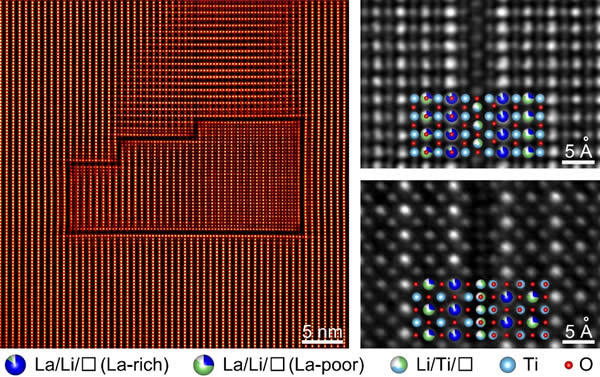
Professor Ma Cheng's group at the University of Science and Technology of China has made new progress in the study of the ion transport mechanism of solid-state electrolytes for lithium batteries. The researchers directly observed a peculiar aperiodic structure using spherical aberration corrected transmission electron microscopy. Although this structure is only one atomic layer thick, it can have a significant effect on the transport of lithium ions, and thus becomes another type of non-periodic structure that requires close attention from solid-state lithium battery researchers in addition to grain boundaries and point defects. The research results were published in the international academic journal Nature Communications under the title of Single-atom-layer traps in a solid electrolyte for lithium batteries.
All-solid-state lithium batteries have become the focus of current battery research because of their safety and high energy density. The key to successfully constructing this battery is to find a suitable solid electrolyte. In order to design a solid electrolyte with high ionic conductivity in a targeted manner, researchers must first fully understand the lithium ion transport mechanism. For solid electrolytes, the "non-periodic structure" that disturbs the ideal crystal structure can bring about an order of magnitude change in ion conductivity, so they are essential for understanding the ion transport mechanism. In previous studies, the non-periodic structures that have received widespread attention mainly include the two major categories of grain boundaries and point defects, and the above work found a new class of non-periodic structures that can greatly affect ion transport. Through spherical aberration corrected transmission electron microscopy observation of the classic solid electrolyte Li0.33La0.56TiO3, the researchers found a large number of monoatomic layer defects, and these defects will form a closed loop with each other. Comprehensive analysis of microscopy and theoretical calculations shows that although these defects are only one atomic layer thick, its special atomic configuration can completely prevent lithium ions from passing through. When these defects combine with each other to form a closed loop, the lithium ions in the enclosed volume will not be able to escape, and the lithium ions outside it will not be able to enter, making this part of the material essentially unable to participate in ion transport. Electron microscope observation has confirmed that this phenomenon exists in a large amount in the sample, and the ionic conductivity of Li0.33La0.56TiO3 will therefore decrease by about 1-2 orders of magnitude. The researchers named this unique aperiodic structure "single-atom-layer trap" (SALT). In future research, if the formation of single-wall lithium traps can be reduced or even avoided, the ionic conductivity will be significantly improved. Researchers are exploring further in this direction. This discovery provides a new direction for the study of ion transport mechanism and material design optimization. The reviewers of Nature Communications highly affirmed the work, thinking that "this article is exciting to read and reported a very novel observation" and that "it will be even more common in the field of solid electrolyte / solid battery Provoked extensive discussion in the community of materials science and electron microscopy. "
The first unit of the paper is the Chinese University of Science and Technology, the co-first authors are Zhu Feng, a PhD student from the Chinese University of Science and Technology, Md Shafiqul Islam, a PhD student from the University of Maryland, and Dr Lin Zhou from the Ames Laboratory in the United States. Ma Cheng, a non-China University of Science and Technology professor. This work was supported by the National Key R & D Program of the Ministry of Science and Technology, the National Natural Science Foundation of China, and the China National University of Science and Technology Innovation Team Cultivation Fund.
Urinal Flush Valve
Urinal flush valve is made of brass, chrome plated. Press down for water, delay time 6 to 8 seconds, then automatic closed. It often use for hung Urinal in public washroom. Exposed type flush valve looks simple, easy to install and operate. Working pressure should be 0.05MPa to 0.9MPa.
Exposed Urinal Flush Valve,Concealed Urinal Flush Valve,Automatic Urinal Flush Valve,Urinal Flushing System
SHENZHEN KING OF SUN INDUSTRY CO.,LTD , https://www.handybasinfaucet.com